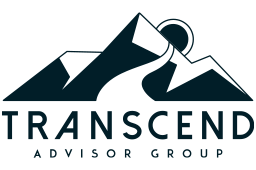When you say the words “life insurance,” most people’s eyes glaze over and they look for the nearest exit. And we understand why. Everyone has had an experience where a college buddy or new brother-in-law wants to talk to you about how they can dramatically change your financial future by selling you a policy.
This is a shame. Life insurance is actually an incredibly powerful and flexible tool that can help protect your family and your business while also allowing you to grow your legacy and then transfer it efficiently to your heirs. The key is to find the right policies to match your needs and goals and then manage those policies effectively.
And yes, we said policies plural. For many successful families and business owners, owning different policies aimed at certain liabilities or designed to help support certain planning goals leads to more optimal outcomes. Understanding the nuances of different policies can be daunting, so we wanted to provide a high level overview of the various types of life insurance.
The categories of life insurance policies which meet most every need are Term Life and Whole Life. We will discuss the differences below, but a super simple way to view the difference is that Term Life is like renting an apartment and Whole Life is the equivalent of owning your house. According to the American Council of Life Insurers (ACLI), approximately 40% of policies purchased in 2022 were Term Life, with the remaining 60% being Whole Life.
Let’s take a closer look at these options.
Term Life Insurance
Term Life insurance is the most basic form of life insurance and what most people think of when they consider life insurance. These policies provide coverage for a specific period, such as 10, 20, or 30 years, and only pay out if the insured dies within the policy term.
Term Life is ideal for situations where there is a temporary need for coverage. For instance, a young family may find Term Life coverage beneficial to ensure financial stability if the primary earner passes away. As the family’s needs change, such as when children finish college or the mortgage is paid off, the necessity for coverage may diminish.
Young buyers should consider Term Life policies that offer the option to convert to Whole Life coverage in the future. This flexibility can save on future costs and simplify underwriting processes.
Permanent Insurance
Permanent life insurance is designed to pay out a death benefit regardless of when the insured passes away, often covering the individual until age 100 or even beyond.
The basic design of most permanent policies is for the death benefit and the premium to stay the same, or level, throughout the life of the policy. This allows for the creation of an alternative benefit of these policies called “cash value.”
Cash value is created because carriers keep the premium level over the course of a policy by charging a premium that, in the early years, is higher than what’s needed to pay claims, investing that money, and then using it to supplement the level premium to help pay the cost of life insurance for older people. By law, when these excess payments reach a certain amount, they must be available to the policyholder as cash value if he or she decides not to continue with the original plan.
Policyholders can access the cash value through withdrawals or loans. Withdrawals reduce the cash value and potentially the death benefit, while loans accrue interest but do not immediately reduce the death benefit unless the loan and interest are unpaid at the policyholder’s death.
As Permanent Life Insurance is a more complex policy than Term Life, policies tend to be more expensive.
Within Permanent Life insurance, there are several types: Whole Life, Universal Life, Variable Universal Life, and Private Placement Variable Universal Life. Each of these types offers unique features and benefits (and even subversions of the policy types). Let’s take a brief look at each type.
Whole Life Insurance
Whole Life, also known as Ordinary Life, is the most common type of permanent insurance. It offers a death benefit along with a cash value account. Policyholders agree to pay regular premiums for a specific death benefit, and the cash value grows based on dividends paid by the insurance company.
These policies are suited for long-term or permanent coverage needs, such as estate planning or funding a business buy-sell agreement. While the policy performance is stable, it offers limited flexibility in terms of premium payment timing or amount.
Universal Life Insurance
Universal Life insurance provides more flexibility than Whole Life. Policyholders may be able to adjust the death benefit and premium payments, provided there is sufficient cash value in the account to cover the costs. The cash value account generally earns a money market rate of interest, which is periodically set by the carrier.
This flexibility allows policyholders to adapt their premiums and death benefits to changing financial circumstances. However, if the savings in the cash value account are depleted, the policy might lapse, ending the life insurance coverage.
As with Whole Life, Universal Life is chosen where there is a permanent need, such as estate planning, as well as for some business applications, but also where the flexibility discussed would be useful.
Variable Life & Variable Universal Life Insurance
Variable Life insurance combines death protection with a cash value savings account, where a portion of the premium is invested in insurance versions of mutual funds. The policy’s value can grow quickly, but it comes with investment risk. If the investments perform poorly, the cash value and death benefit may decrease.
Variable Universal Life policies offer the investment risks and rewards of Variable Life insurance, along with the flexibility of adjusting premiums and death benefits like Universal Life policies.
These policies are ideal for those seeking permanent coverage with greater control over how premiums are invested. Given their complexity, these policies require the salesperson to be securities licensed.
Private Placement Variable Universal Life Insurance
Private Placement Variable Universal Life (“PPVUL”) is a Variable Universal Life insurance contract not offered to the general public. It is available only to qualified purchasers or accredited investors.
PPVUL is typically used for investment purposes, allowing policyholders to make long-term investments under a life insurance structure while enjoying benefits like tax-deferred growth of the cash value and an income tax-free death benefit.
We Can Help
At Transcend Advisor Group, we want to turn the view of life insurance from something you buy out of obligation from your college buddy to make him stop calling, to an incredibly powerful tool that supports and optimizes all your other planning.
As part of a comprehensive wealth management strategy, life insurance can play an important role in solving specific objectives, including protecting families and businesses, accumulating future income and creating tax efficiency.
Reach out and we can review your situation and determine how life insurance may fit into, and help optimize, your financial planning efforts.
In addition, we offer complimentary, comprehensive independent life insurance reviews that identify how well your existing policies are performing and whether they continue to meet your needs. Our goal is to ensure your life insurance is efficient and adapts to your life and goals.




